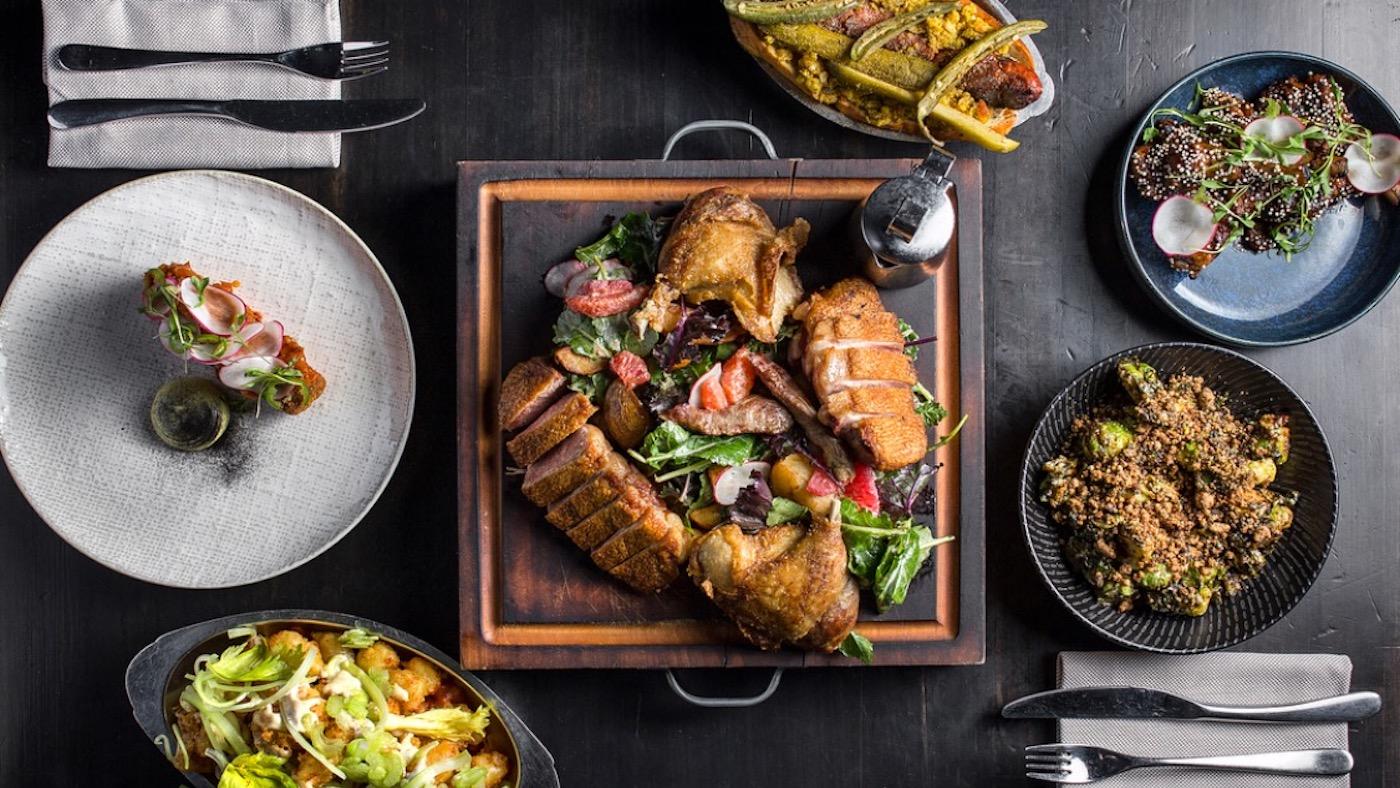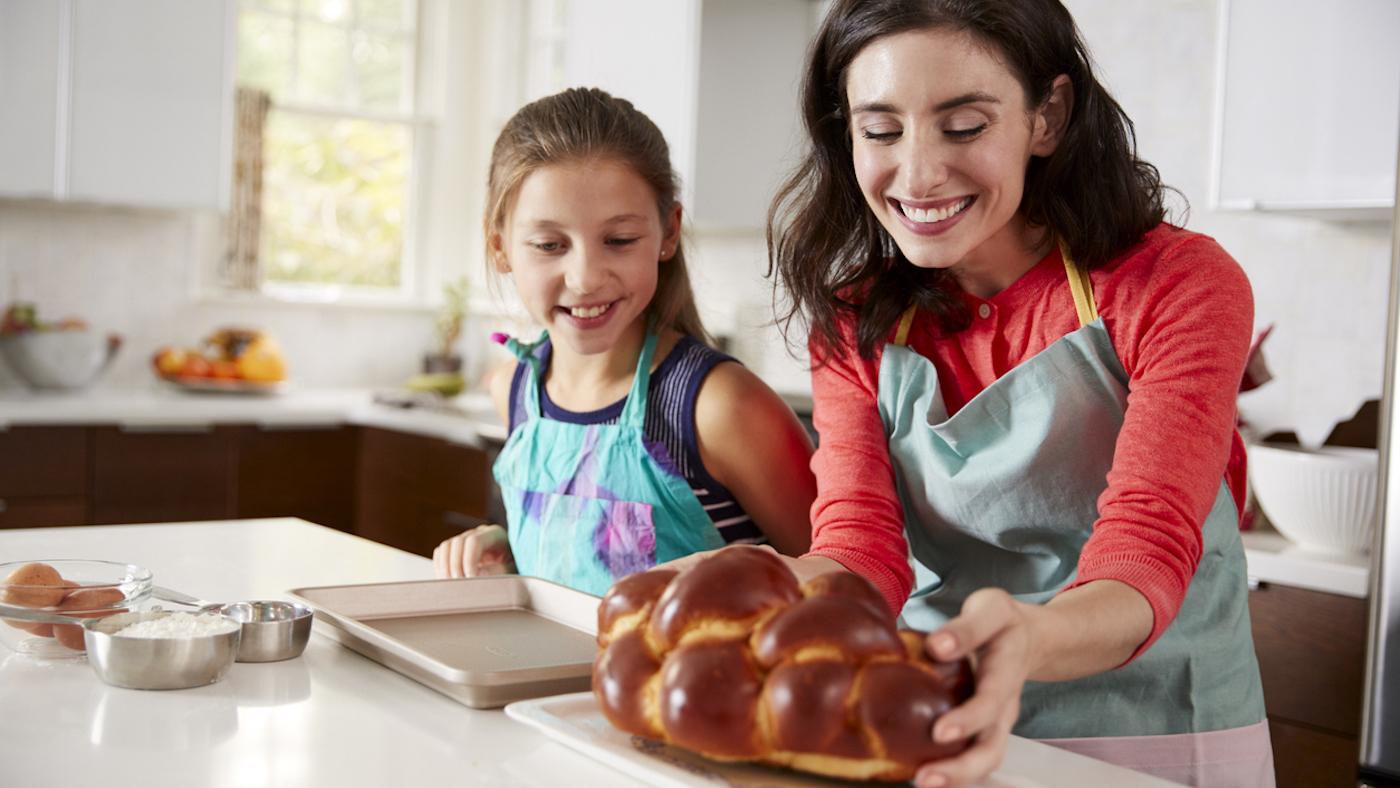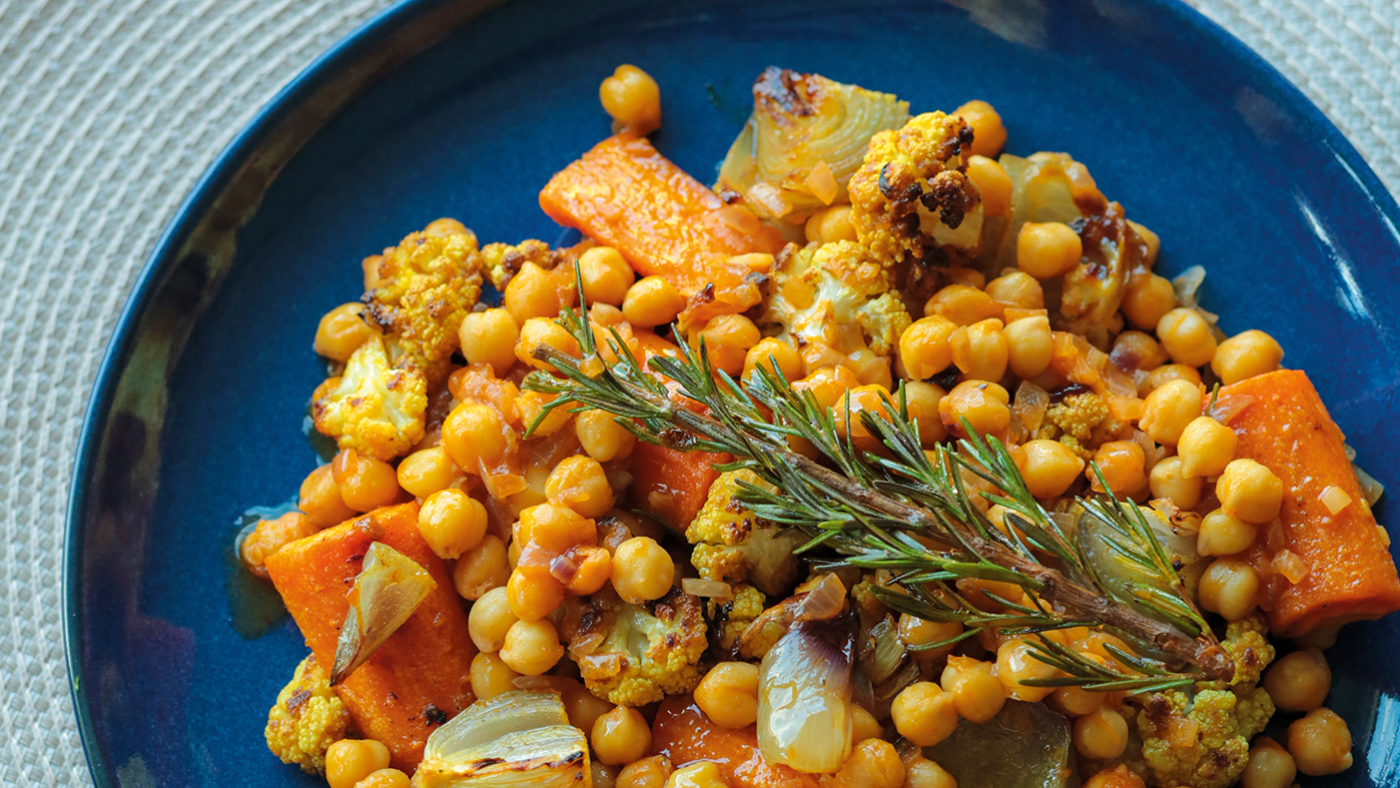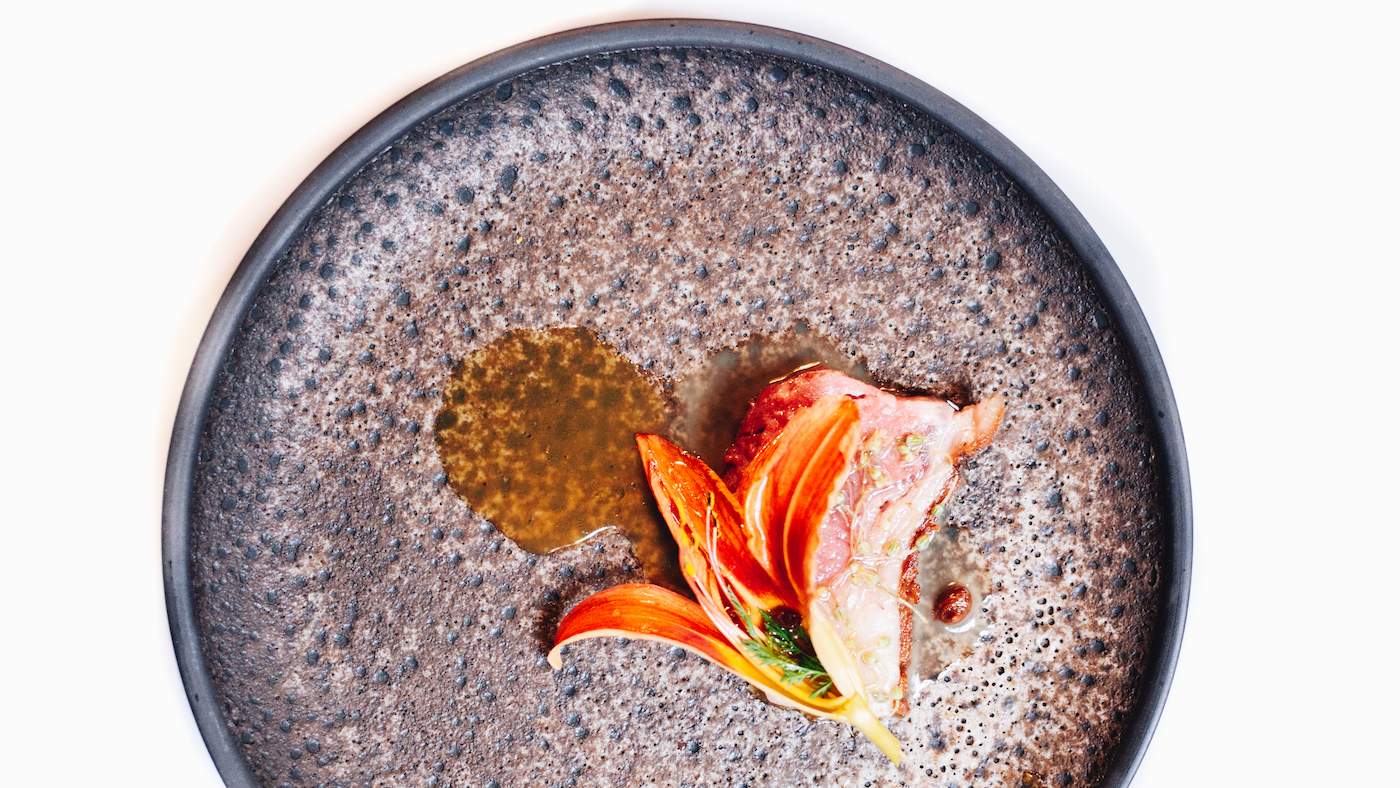Learn How to Make Your Own Pita Bread
Daniel Hautzinger
August 17, 2018
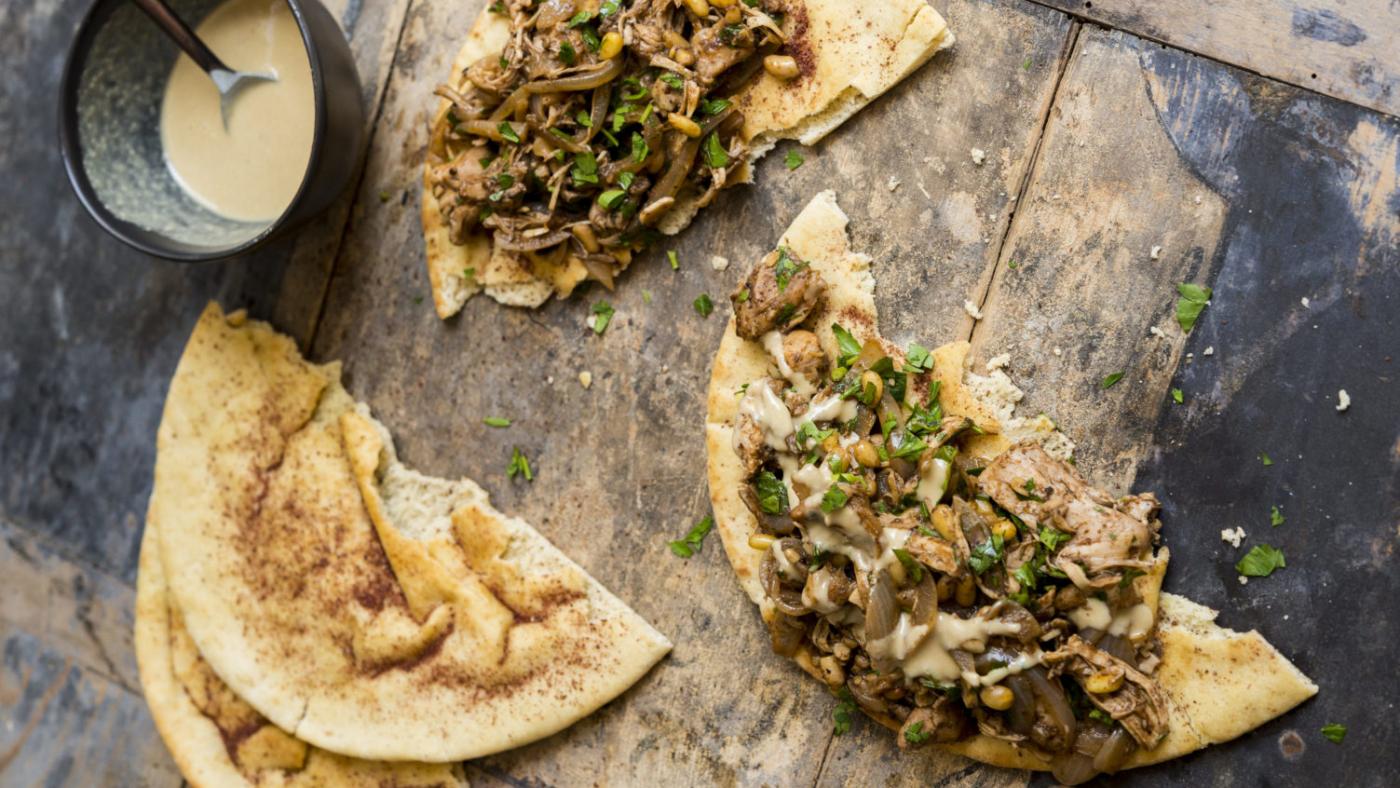
Christopher Kimball's Milk Street airs Saturdays at 4:00 pm beginning September 8.
Even people who bake bread at home often don't know how to make pita, despite its status as a staple of Middle Eastern dining. Learn how to make the flatbread with a rigorously tested, exact recipe from Christopher Kimball's Milk Street, and you'll be able to prepare a full-on, completely homemade Middle Eastern feast.
Pita Bread
This pita bread, made with whole-wheat flour and whole-milk yogurt, is full-flavored and has a pleasant chew. To ensure the breads puff nicely and form pockets, they're baked two at a time on a heated baking steel or stone. We preferred a stand mixer for making the dough, but a food processor did the job, too. (See the note at the bottom of the recipe for instructions on making the dough in a food processor.) Don't forget to heat the baking steel or stone for a full hour before baking. And do cover the pita breads with a towel when they come out of the oven to keep them soft. Store left-over pita in a zip-lock bag for up to a day; to reheat, wrap the pitas in foil and heat for 4 minutes at 300°F.
Start to finish: 4 hours (40 minutes active)
Servings: Ten 6-inch pita rounds
Ingredients
4 tbsp grapeseed or other neutral oil, divided
175 grams (1 1/4 cups) bread flour, plus extra for dusting
175 grams (1 1/4 cups) whole-wheat flour
2 1/4 tsp instant yeast
2 tsp white sugar
3/4 cup warm water (100°F to 110°F), plus more if needed
1/4 cup plain whole-milk yogurt
2 1/2 tsp kosher salt
Directions
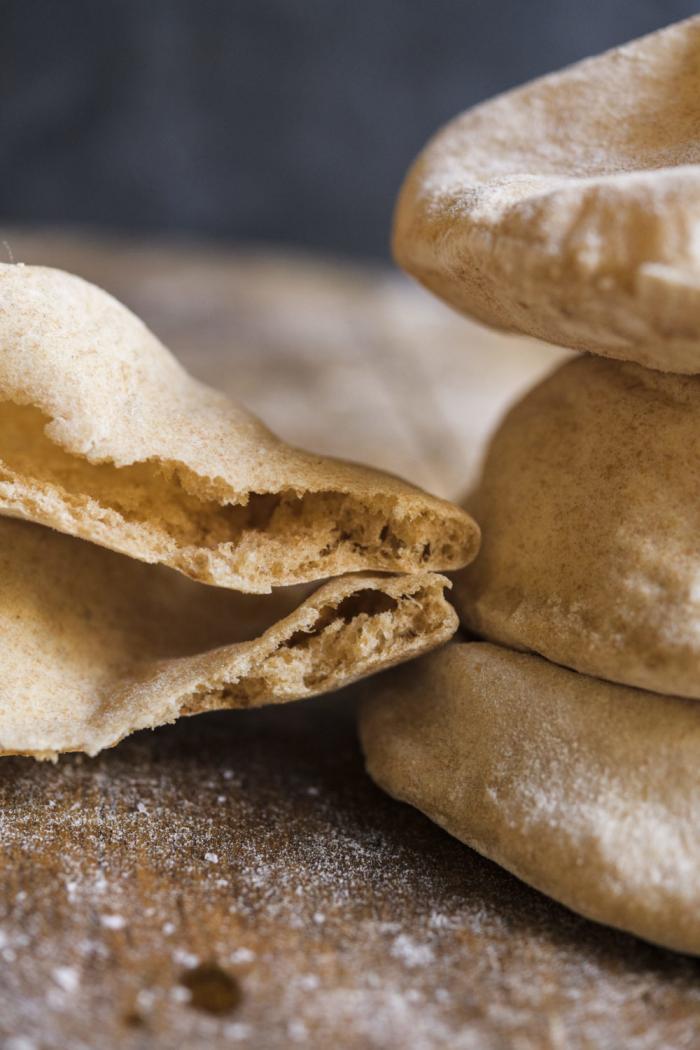 Photo: Connie Miller of CB Creatives1. Coat a medium bowl with 1 teaspoon of the oil; set aside. In the bowl of a stand mixer fitted with the dough hook, add both flours, the yeast, and sugar. Mix on low until combined, about 5 seconds. Add the water, yogurt, and 2 tablespoons of the oil. Mix on low until a smooth ball forms, about 3 minutes. Feel the dough; it should be slightly sticky. If not, add water 1 1/2 teaspoons at a time (no more than 2 tablespoons total), mixing after each addition, until slightly sticky. Let rest in the mixer bowl for 5 minutes.
Photo: Connie Miller of CB Creatives1. Coat a medium bowl with 1 teaspoon of the oil; set aside. In the bowl of a stand mixer fitted with the dough hook, add both flours, the yeast, and sugar. Mix on low until combined, about 5 seconds. Add the water, yogurt, and 2 tablespoons of the oil. Mix on low until a smooth ball forms, about 3 minutes. Feel the dough; it should be slightly sticky. If not, add water 1 1/2 teaspoons at a time (no more than 2 tablespoons total), mixing after each addition, until slightly sticky. Let rest in the mixer bowl for 5 minutes.
2. Add the salt and knead on low until smooth and pliable, 10 minutes. Transfer to the prepared bowl, forming it into a ball and turning to coat with oil. Cover with plastic wrap and let rise in a warm, draft-free area until well-risen but not quite doubled in volume, 1 to 1 1/2 hours.
3. Dust a rimmed baking sheet evenly with bread flour. Transfer the dough to the counter. Using a dough scraper or bench knife, divide the dough into 10 pieces (about 2 ounces each). Form each into a tight ball and place on the prepared baking sheet. Brush each ball with 1/2 teaspoon of the remaining oil, then cover with a damp kitchen towel. Let rise in a warm, draft-free area until well-risen but not quite doubled, 30 to 60 minutes. Meanwhile, heat the oven to 500°F with a baking steel or stone on the upper-middle rack.
4. Lightly dust two rimmed baking sheets with bread flour and lightly dust the counter. Place a dough ball on the counter; use a lightly floured rolling pin to roll the ball into a round ⅛ inch thick and 5 1/2 inches in diameter. Set on one of the prepared baking sheets. Repeat with the remaining dough balls, placing them in a single layer on the baking sheets. Cover with a damp kitchen towel and let rest for 10 minutes.
5. Lightly dust a peel with bread flour, then place 2 dough rounds on the peel without flipping them. Working quickly, open the oven and slide the rounds onto the baking steel. Immediately close the door. Bake until the breads have puffed and are light golden brown, about 3 minutes. Using the peel, remove the breads from the oven. Transfer to a wire rack and cover with a dry kitchen towel. Repeat with the remaining dough rounds. Serve warm or room temperature.
NOTE: To make the dough in a food processor, combine the flours, yeast, and sugar in the work-bowl and pulse until combined. Add the water, yogurt, and 2 tablespoons of the oil and process until a smooth, slightly sticky ball forms, about 1 minute. Add additional water, 1 1/2 teaspoons at a time (up to 2 tablespoons total), if the dough feels too dry. Let the dough rest in the processor for 5 minutes, then add the salt and process until smooth and pliable, about 1 minute. Knead by hand on a lightly floured counter for 1 minute, then transfer to an oiled medium bowl and turn to coat. Cover with plastic wrap and let rise in a warm, draft-free spot until not quite doubled in bulk. Continue with the recipe from the third step to shape and bake.

